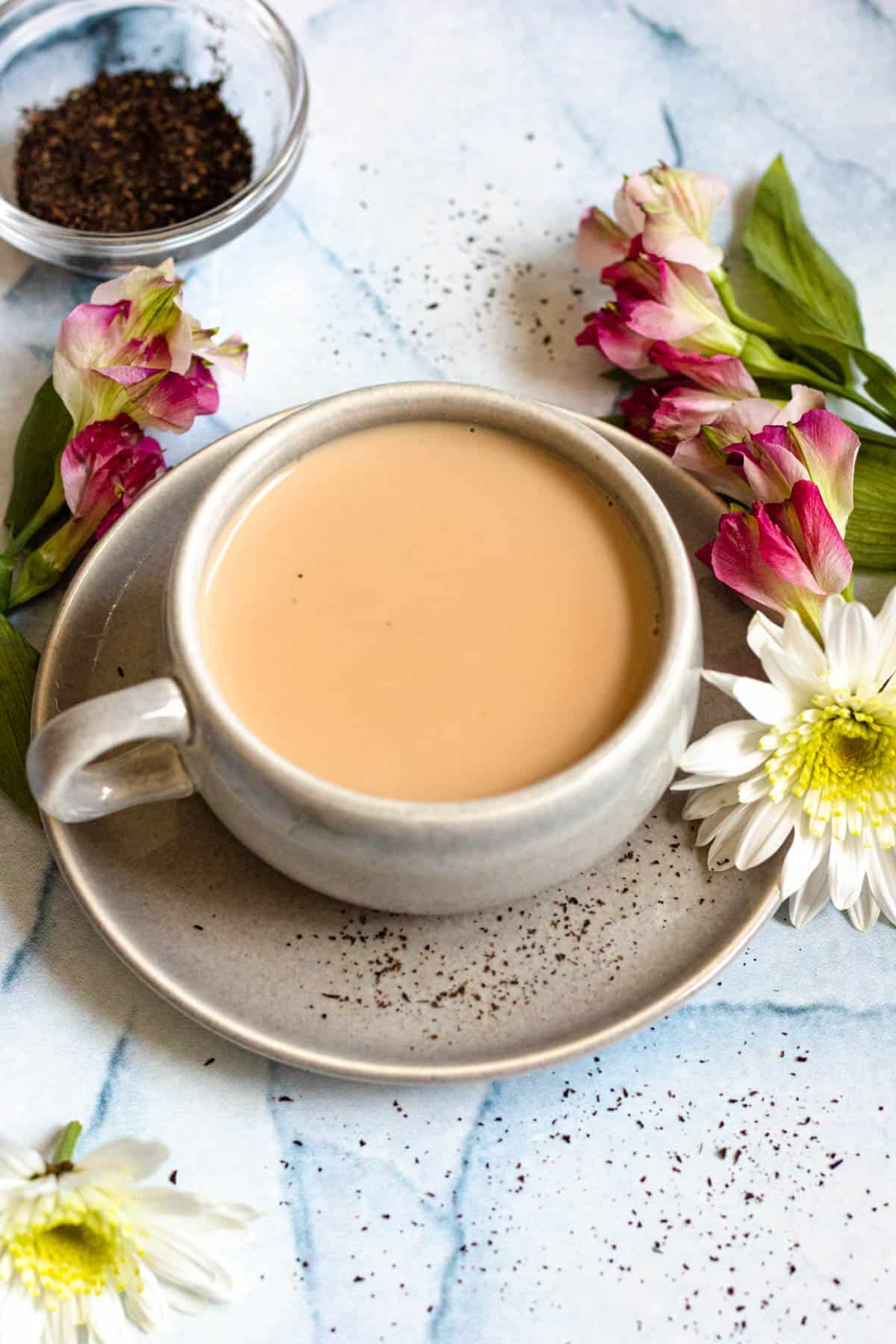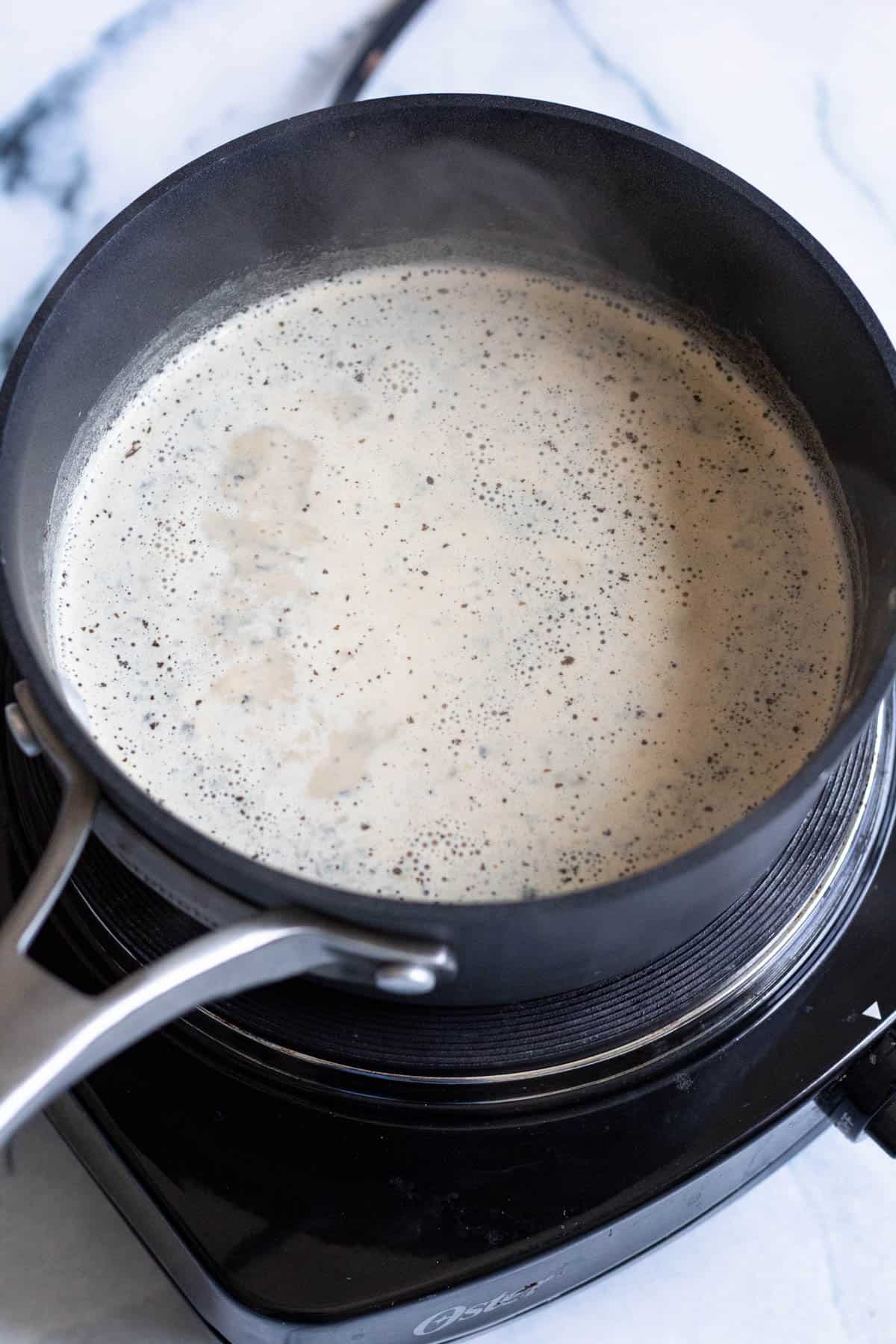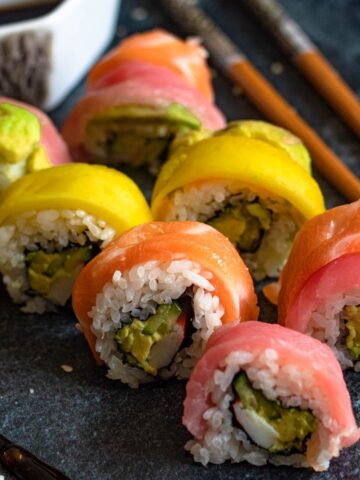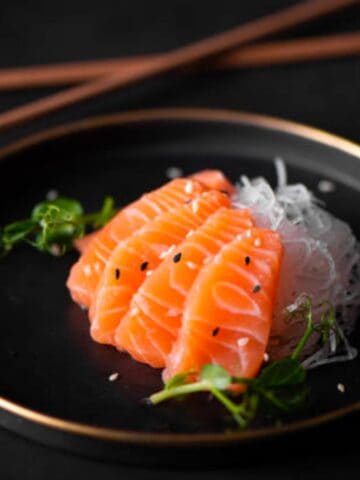Royal Milk Tea is a sweet, popular Japanese drink. It is rich and delicious. It is also easy to mix up with Milk Tea, which is not quite the same. To ensure you get exactly the tea drink you want, keep these differences in mind.

There are two types of Milk Tea found in Japan. One is a sweet, rich tea called Royal Milk Tea. The other is a black tea with a hint of milk. The taste of each differs greatly.
While Royal Milk Tea has the same ingredients as a Milk Tea you might find in other parts of the world, the ratio of those ingredients and the way in which they are combined has a huge impact on the overall flavor of the drink.
If you are looking for something authentically Japanese, with a signature silky texture and milky flavor, you simply do not want to confuse Royal Milk Tea and Milk Tea.
What is Royal Milk Tea?
Royal Milk Tea is a simple black tea with milk and sugar. It is usually made with Assam or Darjeeling tea leaves or possibly a combination of both.
Assam leaves give the drink a slightly malty, rich flavor while Darjeeling is more earthy. Both are common black tea leaves that you might find in an English Breakfast Tea.
Royal Milk Tea, while sounding like it was created for the British royal family, was really just created by a tea company, Lipton, in Japan in 1965. It was released with several other flavors of Japanese teas as part of a recipe series. It quickly became a crowd favorite and has been recreated and shared ever since.
This creamy Milk Tea has become such a popular drink in Japan that you can find it on the menu in high-end cafes and tea shops or find bottles of Royal Milk Tea sold in vending machines and convenience stores. It is often served hot or cold.
You can also often find Royal Milk Tea served with boba pearls or tapioca pearls.
What is Milk Tea?

There are many variations of Milk Tea around the world. At its core, Milk Tea is simply a type of tea, usually black tea, with a splash of milk.
It may be made with the same tea leaves as Royal Milk Tea, but the ratios are very different. There is quite a lot of tea in the cup, and very little milk. It also may or may not contain sugar.
How is Royal Milk Tea Made?

The main difference between Royal Milk Tea and regular Milk Tea is how it is prepared.
British Milk Tea, or regular Milk Tea, is simply black tea brewed in water. Once it is done being brewed, a splash of fresh milk is added to the cup along with sugar if you prefer.
Royal Milk Tea, on the other hand, calls for the leaves to be brewed in both water and milk. The leaves are first opened in boiling hot water, then milk is added to the mixture in a one-to-one ratio to the water. The leaves continue to brew in the warm milk.
It’s important that the milk does not boil, but it does become warm, bringing out all the rich flavor.
Royal Milk Tea is often compared to Indian chai. Both drinks use black tea and both brew the tea directly in the milk. The difference is that Indian chai tea has added spices like cinnamon that give it a unique flavor.
Hong Kong Milk Tea is similar to English Milk Tea but sweetened condensed milk is added to the cup, rather than fresh whole milk. This reminds me of this Iced Coffee Recipe from Southeast Asia, which adds sweetened condensed milk into iced coffee!
Flavor and Texture
Royal Milk Tea is known for its sweet, rich, yet simple taste.
The higher ratio of milk to water gives the delicious drink a very silky texture and a sweet flavor. Usually, whole milk is used, but some companies make it even sweeter by playing up the creamy richness of milk, using cream or sweetened condensed milk.
Royal Milk Tea also contains at least a hint of sugar and simply would not be the same without it. The taste of Royal Milk Tea depends on that hint of sweetener. Royal Milk Tea is so sweet that it is sometimes used as a sweetener itself for some desserts.
Hokkaido Milk Tea is another popular tea that is a type of Royal Milk Tea. Hokkaido uses milk from the Hokkaido region of Japan and is usually sweetened with honey, caramel, brown sugar and vanilla.
Ingredients for Royal Milk Tea
A typical Japanese Royal Milk Tea recipe usually contains:
- Black Tea: Most tea experts choose Assam tea leaves as the preferred type of black tea because of their rich, malty flavor. I have found Darjeeling leaves work just as well. You can use high-quality loose leaves for this creamy tea or purchase pre-packaged tea bags with black tea blends.
- Milk: Traditionally whole milk is used but you could substitute any milk that you prefer. If you are trying to reduce the calories or fat in the drink, you could use something lighter, but many high-end cafes will use something richer to really increase the flavor.
- Sweetener: Plain white sugar is used most often for this drink.
You may be able to find Royal Milk Tea in different flavors like peach, raspberry or strawberry flavor. There are also some variations that use green tea or matcha tea.
Benefits of Black Tea
Black tea is known to have a beautiful, robust flavor and many health benefits.
A cup of this tasty tea has less caffeine than coffee but more than green tea. It is said to provide a calming effect to the body while improving focus.
Royal Milk Tea is not considered a healthy drink option. The amount of milk in this popular Milk Tea makes it slightly higher in calories as well.






Leave a Reply